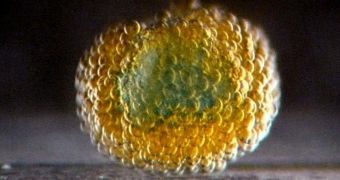Even though we're still ages away from improving man's physiology enough to emulate the regenerative capabilities of reptiles and certain fish, there are alternative injury-solving techniques. Soon, 3D printed tissues might even make the list.
That is the main goal of OxSyBio Ltd., a spin-off company from the University of Oxford.
Isis Innovation, the university's commercialization company, has just announced that OxSyBio has raised £1 million / $1.68 million / €1.21 million.
Not really that much money compared to the kinds of acquisitions and investments that happen in the tech industry every year.
Then again, it's not like world-changing projects didn't succeed with even less funding before.
Anyway, OxSyBio's technique uses droplets that transmit electrical pulses similar to those used by living cells to communicate in the human nervous system.
Thousands of droplets coated with a film that imitates the external membrane of an actual living cell can be turned into simple cells by studding those membranes with protein pores.
Regenerative healing is the main field where OxSyBio's concept will help, but practical applications needn't stop there. Fully 3D printed organs, patches and other living tissues could be made based on this research model.
“Synthetic biology and regenerative medicine will be central to the development of healthcare in the 21st century and IP Group is pleased to support OxSyBio as it seeks to develop products that will help to realize the potential of these exciting and growing areas,” said Alan Aubrey, chief executive officer of IP Group.

 14 DAY TRIAL //
14 DAY TRIAL //